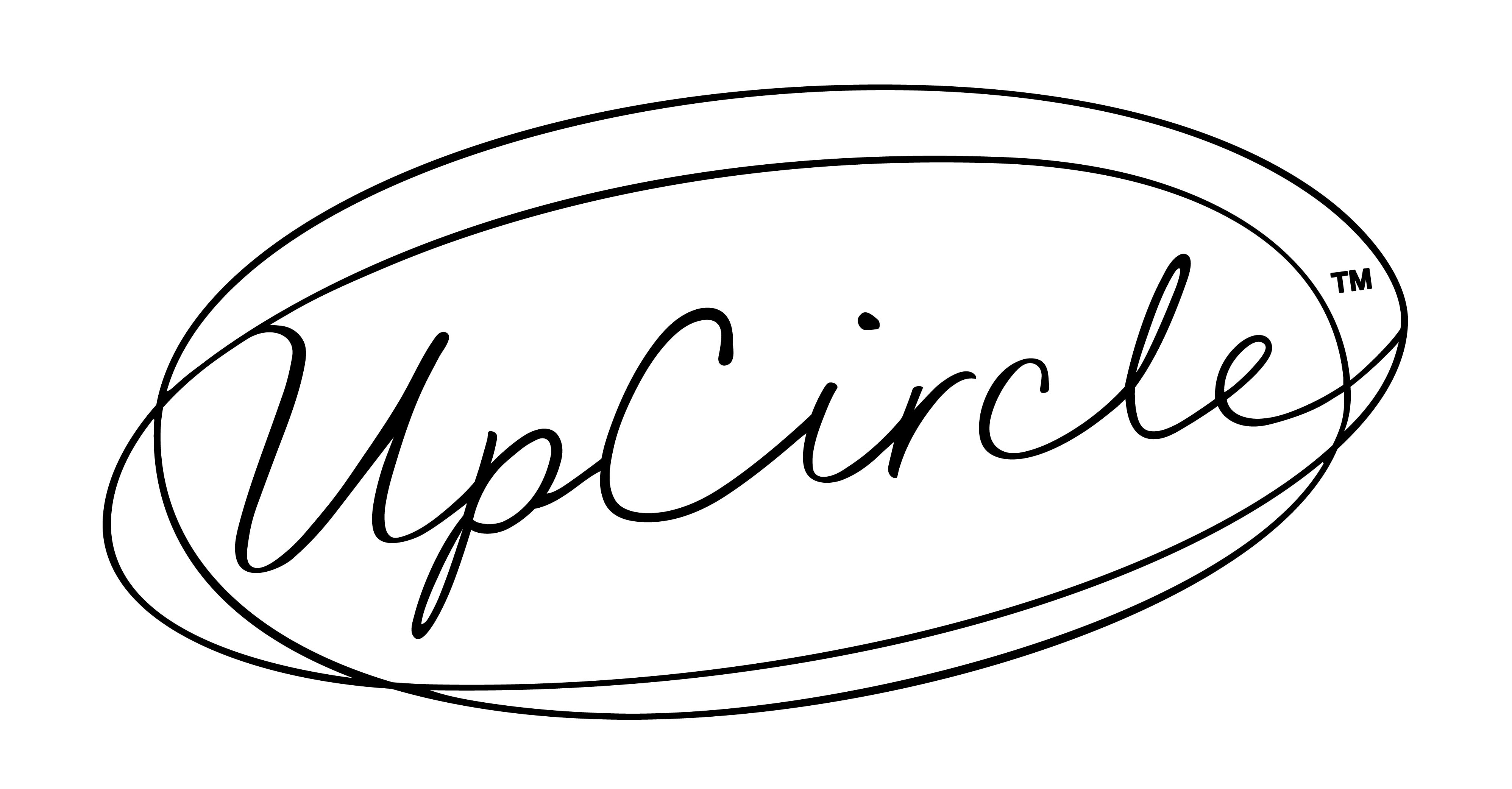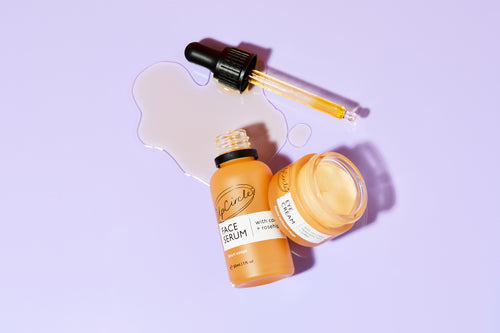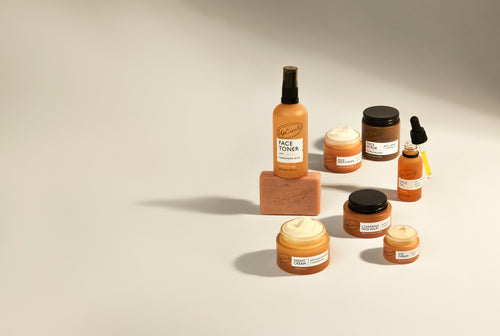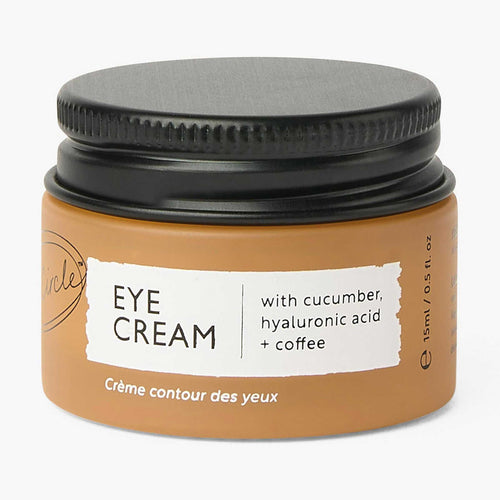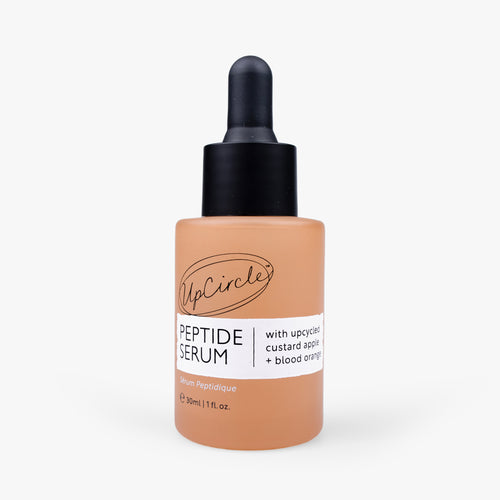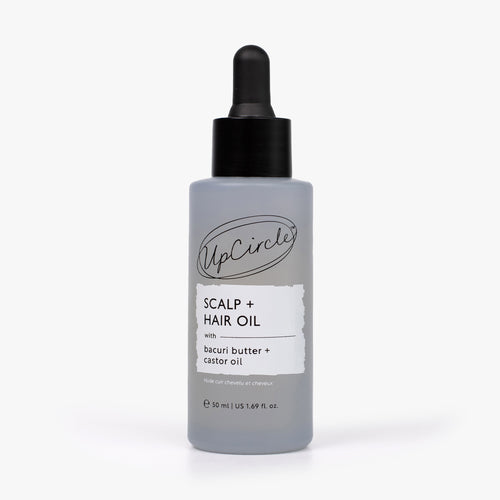I remember distinctly the look of horror on the face of my first manager when I told her I was using Clearasil exfoliator to cleanse every day. That might seem like a pretty irrelevant personal choice for a manager to get so zealous about, but my first job as a teen was working for a leading British brand in natural cosmetics. It was there that I was educated on the unsustainable, unethical and toxic nature of the ‘normal’ cosmetics I was using. It was pretty shocking to be told that, despite my eco-ethics, I was unknowingly harming the environment with chemically based foaming agents and plastic beads in my exfoliant each morning! Not to mention exacerbating my already greasy skin with a cleanser that was stripping me of my natural oils.
I almost didn’t believe it at the time that many of the chemicals in unnatural products can cause numerous health problems; including cancer, miscarriage, and lung disease. I mean, how could that be legal?? But what interests me most now, as a specialist in menstrual wellbeing, is that many also contribute to a variety of hormone problems including breast cancer, penile defects, decreased sperm count, endometriosis, PCOS and possibly early menarche (Sathyanarayana et.al. 2016) (Darbre et.al., 2004) (Caserta et.al., 2007). The WHO (world health organisation), EU and Endocrine Society have all issued major reports on the dangers of endocrine disruptors (EDC’s). Yet regulation of their use is incredibly patchy.

In this article I’ll talk about the 3 most common of these.
2. Parabens - a preservative that kills fungus and bacteria. Found in almost all cosmetics containing water. Linked to breast cancer (Darbre et.al., 2004).
3. Bisphenol A (BPA) - is used in plastic packaging and as a coating on some metal food containers. It’s a known endocrine disruptor and will effect whatever product it is containing. It was discovered in 2008 to cause cancer, chromosomal abnormalities, brain and behavioural abnormalities and metabolic disorders (Perez, 2019).
All these chemicals (EDC’s) look like oestrogen to the body. Sometimes they increase, sometimes decrease the effects of oestrogen in the body so it’s easier to just call them endocrine disruptors (EDC’s) (Caserta et.al., 2007). So anyone suffering with an oestrogen imbalance of one sort or another should carefully check the products they’re using and their packaging for these chemicals.
Yet many would argue their safety, after all, it’s hard to believe they are really this bad if they’re permitted to be used in so many products. The USA regard BPA as safe but in the EU and Canada they are about to ban its use completely (Perez, 2019). In 2015 the EU decided that EDC’s can’t be produced without specific purpose (Perez, 2019). But it can still be imported. In the USA they’re so anti-nanny-state that you don’t even have to list the ingredients on cleaning products. Even products labelling themselves as ‘green’ cleaning products can contain EDC’s (Perez, 2019). Partly because they don’t have to declare the content but also because the term ‘green’ doesn’t mean anything in legal terms. There is more than just good research to protecting the public from these chemicals, politics can prevent perfectly sensible guidelines from being put into action.
Sadly not all that is legal is necessarily safe or good for you. Especially if you’re a woman.

As shown in Caroline Perez’s recent book Invisible Women, there are many (too many) examples where women aren’t accounted for in research. The research we have on these ingredients is based on a single application of the chemical to the skin, of a man. This, of course, doesn’t capture how these chemicals may effect the female hormone cycle. The research erroneously thinks that men and women are the same physiologically. In fact, women have thinner skin and different drug metabolism to men (Perez, 2019). This means that women absorb things more readily and are likely to be more sensitive to the chemical when they do (Perez, 2019).
Moreover, we don’t come into contact with these chemicals just once a day but many as they’re in our cosmetics, hair products, food containers and cleaning products too! We are being exposed to them repeatedly through the day. Of course, the people exposed most are the women who work in their production. These women are potentially our ‘canaries down the mine’, able to alert us to problems that aren’t as obvious in the general populace. After 10 years working alongside EDC’s a woman is 42% more likely to get breast cancer (Perez, 2019).
Sadly, it doesn’t end there when it comes to potentially harmful ingredients in our cosmetics and cleaning products. Mineral oils are a by-product of petroleum and, depending on the grade of oil, they can be contaminated with toxins. Mineral oil which hasn’t been purified has been shown to cause cancer. This isn’t news, we’ve known it since the early 1900’s (Bingham, 1988). To try and prevent this harm in cosmetics the grade should be much higher in an attempt to minimise the contaminants, but some believe it may not be completely effective and therefore mineral oils could still pose a risk.
Moreover, mineral oils are possibly the biggest contaminant of the human body. Research has shown that the older we get, the more we have in our fat tissue (Concin, et.al., 2011). This implies that the effects grow over time and the stores in our fat tissue are thanks to long-term exposure from things like cosmetics (Concin, et.al., 2011). Yet another example of a potentially harmful ingredient which would be rated as perfectly safe when considered in a single application.
Another ‘ingredient’ to be aware of next time you read the back of a cosmetic is parfum, sometimes listed as fragrance. This so-called ingredient is actually a term companies can use to indicate a scent has been added without having to go into depth as to what exactly that includes. It means a company can protect their secret signature scents but it also keeps the consumer in the dark about what’s going on their skin. The Environmental Working Group has found that nearly 75% of fragrances contain pthalates (ewg.org, 2019). You’ll remember that word from earlier, when we were talking about endocrine disruptors. Yup, parfum may well involve even more EDC’s!
One example where fragrance was more closely analysed is synthetic musk. The Environment Protection agency in the USA described synthetic musk as a “persistent, bio-accumulative pollutant, that is sometimes highly toxic” (Daughton and Ternes, 1999).
So from cancer to infertility I think you’ve seen the potential harm these oh-so common chemicals may cause thanks to some seriously sexist research gaps, and that harm doesn’t just effect us; but our environment as well! (*cough* plastic exfoliant beads in the oceans… *cough* just saying.)

What’s the best action to take?
Be sure to read your labels.
It’s worth knowing that ingredients have to be listed by quantity. So whatever comes first makes up the highest percentage of the product. While it may be almost impossible to cut these chemicals out of our lives entirely, at least we can make the effort with our skin care each day with sustainable, natural products we can trust.
Written by Natasha Richardson AKA Forage Botanicals
References
Bingham, E. (1988) Carcinogenicity of Mineral Oils. Annals of the New York Academy of Sciences. Vol. 534, Issue 1, p452-458
Caserta et.al. (2007) Impact of endocrine disruptor chemicals in gynaecology. Human Reproduction Update. Vol. 14, Issue 1, p59-72. [Available online] https://doi.org/10.1093/humupd/dmm025
Concin, N. et.al. (2011) Evidence for cosmetics as a source of mineral oil contamination in women. Journal of Women’s Health. Nov. Issue 20(11), p1713-1719
Darbre et.al. (2004) Concentrations of parabens in human breast tumours. Journal of Applied Toxicology. [Available online] https://doi.org/10.1002/jat.958
Daughton, C. and Ternes, T. (1999) Pharmaceuticals and personal care products in the environment: agents of subtle change. Health Perspectives. Dec. Issue 107(suppl 6), p907-938
eww.org (2019) Find out from EWG which toxins contained in various fragrance products used daily. [Available online]
Perez, C. (2019) Invisible Women: Exposing Data Bias in a World Designed for Men. Chatto and Windus
Sathyanarayana et.al. (2016) First trimester phthalate exposure and male newborn genital anomalies. Environmental Research. Vol.151, p777-782 [Available online] https://www.sciencedirect.com/science/article/pii/S0013935116303322
